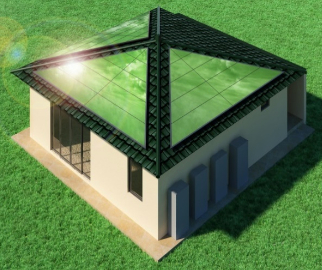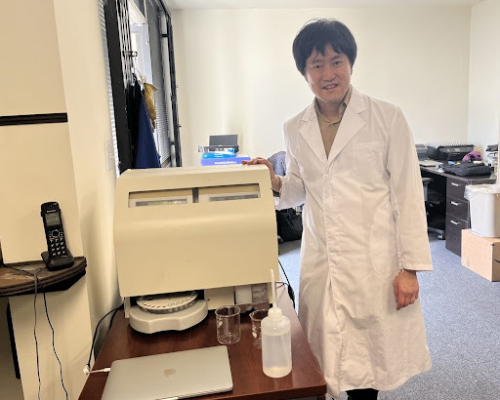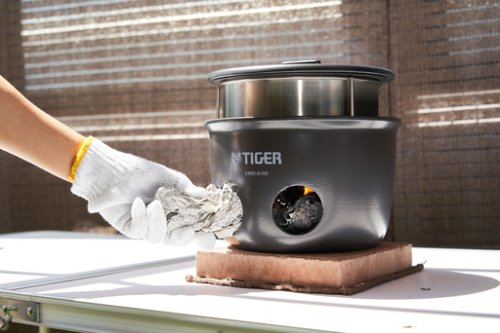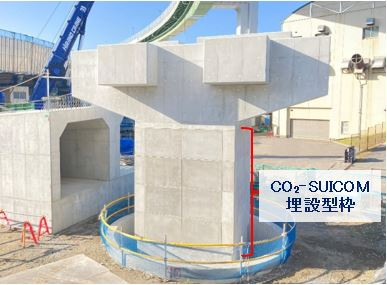J-STORIES ー 太陽光エネルギーの力で水と二酸化炭素(CO2)から有用な化学物質を生成する「人工光合成」。自然のエネルギーと技術により住宅での発電給湯をめざす実証実験が沖縄県宮古島でスタートする。

「人工光合成ハウス」の実証実験は大阪市立大学と建売住宅大手の飯田グループホールディングス(飯田GHD、東京都新宿区)が共同で実施する。めざすのは家庭からのCO2排出を抑制・削減するだけでなく、CO2をエネルギー源に変換し、消費する新しい住宅システムの確立で、実現すれば世界初の成果になるという。
人工光合成技術はすでに政府、大学、産業界などが一体となって、様々な分野で研究が行われている。飯田GHDと大阪市立大学人工光合成研究センターは2015年に共同研究部門を設立。太陽光エネルギーから生成・貯蔵した「ギ酸」から水素を作る人工光合成技術と、生成した水素を使って高効率で発電する技術を開発した。
.jpg)
宮古島での実証実験について、人工光合成研究センターの所長、天尾豊教授は、J-Storiesの取材に対し、「小規模なエネルギー供給システムが人工光合成で可能かどうかを見極めたい」と抱負を語った。
同教授によると、同センターは長年、飯田GHDと共同で水素エンジンの研究を行っており、この研究がきっかけとなって今回の「人工光合成ハウス」に共同で取り組むことになったという。実証実験はコロナの影響で一時保留となっていたが、感染状況が悪化しなければ今年4月から始動した。
現状ではまだ完全に人工光合成だけでは必要なエネルギーを確保できず、一部は太陽光発電の電力を使うことになる、と天尾教授は話す。現状の技術でどの程度の電力を賄えるのかを2025年までに把握し、将来は完全な人工光合成でエネルギー供給を達成したい考えだ。
人工光合成による発電は、太陽光発電と同様、化石燃料を使用せずCO2を削減する効果があるが、それだけでなく、CO2をエネルギー源として分離・回収(CO2の固定化)することができる。
飯田GHD次世代技術開発室の緋田博さんによると、一般的な計算として、5人家族が1時間に必要となるエネルギーは水素の量に換算すると600-1000リットルとなり、これだけの水素を生み出すには、1時間あたり1.2-2.1キログラムのCO2を固定化する必要がある。
人工光合成ハウスのプロジェクトは「2024年までの技術確立を目指している」(緋田さん)という。
記事:高畑依実 編集:北松克朗
トップ写真:pro_creator/Envato
この記事に関するお問い合わせは、 jstories@pacificbridge.jp にお寄せください。
***
***
本記事の英語版は、こちらからご覧になれます。
.jpg)



_smallthumbnail.jpg)
_bigthumbnail.jpeg)




![[PODCAST] 外国人創業者が変える日本のスタートアップの形 (Part 7)](https://storage.googleapis.com/jstories-cms.appspot.com/images/1763538829673unnamed_bigthumbnail.jpg)
![[PODCAST] 外国人創業者が変える日本のスタートアップの形 (Part 6)](https://storage.googleapis.com/jstories-cms.appspot.com/images/1763000777388unnamed_bigthumbnail.jpg)








![[PODCAST] 如何打造成功的新創企業社群(第2集)](https://storage.googleapis.com/jstories-cms.appspot.com/images/1748493203370business-man-holding-light-bulb-social-network-2024-10-31-22-37-36-utc_smallthumbnail.jpg)


